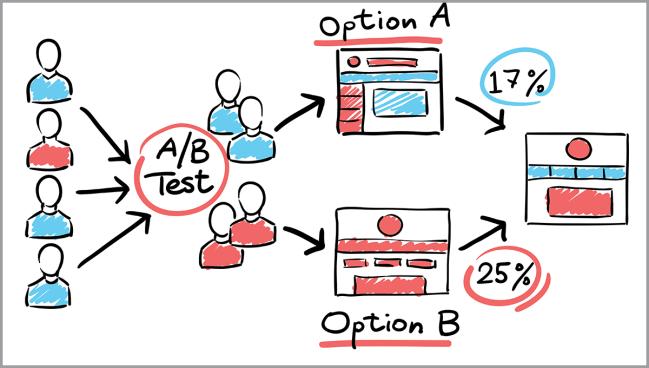Myocarditis Phenotype Is a Key Predictor of Outcomes in COVID-19
Distinct clinical and laboratory findings point to different underlying risks and offer clues for management.

New research suggests there may be at least two different COVID-19-associated fulminant myocarditis phenotypes, each with its own distinct clinical and laboratory manifestations, as well as clinical outcomes.
In a small series, researchers identified COVID-19-related myocarditis in adult patients who did not have evidence of multisystem inflammatory syndrome (MIS), and these patients progressed quickly toward refractory cardiogenic shock and had poorer outcomes compared with MIS-positive COVID-19-related myocarditis patients.
“The patients who were negative for the [MIS] criteria had a very explosive presentation,” senior investigator Guillaume Hékimian, MD (Sorbonne Université/Hôpital La Pitié-Salpêtrière, Paris, France), told TCTMD. The MIS-negative patients who presented with COVID-19-related myocarditis had much more severely impaired left ventricular function and nearly all required venoarterial extracorporeal membrane oxygenation (VA-ECMO) support.
MIS was first identified in children, but it is now known to occur in adults who have been infected with SARS-CoV-2. MIS in adults (MIS-A) is diagnosed on the basis of various clinical and laboratory criteria, including the presence of severe cardiac illness such as myocarditis, pericarditis, or left ventricular dysfunction, among others, or rash and non-purulent conjunctivitis, according to the Centers for Disease Control and Prevention (CDC). Secondary criteria include new-onset neurologic signs, shock or hypotension, abdominal pain, vomiting, or diarrhea, or thrombocytopenia. Additionally, the diagnosis requires laboratory confirmation of inflammation, such as elevated C-reactive protein, ferritin, or interleukin-6, among others.
Soon after the start of the pandemic, Hékimian said they identified the two phenotypes of patients with COVID-19-related fulminant myocarditis based differing clinical and biological presentations. As an ECMO-capable center, they observed that there were myocarditis patients who did not meet the CDC criteria for MIS-A but who progressed rapidly. As opposed to the MIS-positive patients who presented late with high fibrinogen levels, the MIS-negative patients presented much sooner after SARS-CoV-2 infection without evidence of inflammation and became much sicker than MIS-positive patients, he said.
The new paper, with Petra Barhoum, MD and Marc Pineton de Chambrun, MD (both from Sorbonne Université/Hôpital La Pitié-Salpêtrière) as lead authors, was published July 18, 2022, in the Journal of the American College of Cardiology.
Rapid Progression of Myocarditis
For the study, the researchers wanted to compare the clinical, biological, and immunological characteristics of patients with COVID-19-related myocarditis meeting not meeting MIS-A criteria.
At this single center, 38 patients required ICU admission for suspected fulminant COVID-19-related myocarditis between March 2020 and June 2021. All had a positive SARS-CoV-2 RT-PCR or serology with a median delay of 5 days between COVID-19 symptom onset and the manifestation of myocarditis. All patients had severely impaired LVEF and increased high-sensitivity cardiac troponin levels, and 79% presented in cardiogenic shock.
Of the 38 patients, 25 met the MIS-A criteria. These patients had more-frequent fever, skin rash, enanthema, pharyngitis, and conjunctivitis, as per the CDC definition, and they had higher levels of systemic inflammation as measured by interleukin levels, procalcitonin, CRP, and fibrinogen.
My idea is that the virus is a trigger in specific people who have these autoantibodies and who develop fulminant myocarditis when they encounter the virus. Guillaume Hékimian
Patients who were MIS-negative versus MIS-positive presented much earlier with myocarditis following the onset of COVID-19 symptoms (median 3 vs 8 days) and had a faster admission to ICU after myocarditis onset (median 1 vs 4 days). The MIS-negative patients frequently had a positive RT-PCR test result, which rarely occurred in the MIS-positive patients. In contrast, MIS-positive patients were more likely to have positive serology, pointing to an earlier infection.
As assessed by the Sequential Organ Failure Assessment (SOFA) score, MIS-negative patients had a more-severe initial presentation of myocarditis and had a lower LVEF than MIS-positive patients (10% vs 30%). In the MIS-negative patients, myocardial dysfunction occurred suddenly, while it was more progressive in the MIS-positive patients. Large pericardial effusions were frequent in the 13 MIS-negative patients, but rare with the other patients. Importantly, the MIS-negative patients were more likely to require ECMO support compared with MIS-positive patients (92% vs 16%) and had a significantly higher rate of death in the ICU (31% vs 4%).
For the 33 patients who survived, most had normalized LVEF by discharge and LVEF was preserved a median of 235 days later in follow-up.
Transfer to ECMO-Capable Centers
Immunologic profiles also differed between the two groups. Patients who met the criteria for MIS-A had higher circulating levels of cytokines interleukin-22 and interleukin-17, which is consistent with higher prevalence of mucocutaneous manifestations, as well as tumor necrosis factor-α. On the other hand, MIS-negative patients had higher levels of interleukin-8 and interferon-α2. RNA polymerase III autoantibodies, which are markers of systemic sclerosis, an autoimmune disorder that causes atypical growth of connective tissue, were present in 54% of MIS-negative patients but in none of the MIS-positive patients.
“My idea is that the virus is a trigger in specific people who have these autoantibodies and who develop fulminant myocarditis when they encounter the virus,” said Hékimian.
In terms of treatment, Hékimian said the MIS-negative patients were managed differently given the absence of inflammation. Compared with the MIS-positive myocarditis patients, they were less likely to be treated with corticosteroids (54% vs 84%) and intravenous immunoglobulins (61% vs 76%). He added that the optimal treatment of COVID-19-related myocarditis without MIS is not known.
However, if MIS-negative patients are identified, the researchers suggest referring them to ECMO-capable centers given their risk of progressing rapidly to cardiogenic shock. They should be closely monitored to avoid “too late” cannulation, especially when under cardiopulmonary resuscitation, which is known to be associated with poor outcomes.
He stressed, however, that while the MIS-negative patients had more-severe myocarditis, this shouldn’t minimize the severity of the condition in MIS-positive patients. “Whether it’s positive or negative for the [CDC] criteria, they should be followed very closely,” said Hékimian. “If they require inotropes, however, they should be transferred to a center where they can receive ECMO because we know that these patients can evolve very fast.”
In an editorial, Ajith Nair, MD (Baylor College of Medicine, Houston, TX), and Anita Deswal, MD (University of Texas MD Anderson Cancer Center, Houston), say that that while there has been an evolving understanding of fulminant myocarditis in COVID-19, knowledge remains limited. The new findings, according to the editorialists, suggest that MIS-positive myocarditis likely represents a postinfectious complication of SARS-CoV-2 infection, while less is known about the mechanisms behind MIS-negative fulminant myocarditis.
“COVID-19 has increased the focus on the mechanisms of myocarditis and viral-associated myocardial dysfunction,” they write. “Myocardial complications are caused by a direct viral insult, a systemic inflammatory response, or microvascular and macrovascular thrombosis. Fulminant myocarditis is rare and may result from either of two mechanisms: viral tropism or an immune-mediated mechanism. It remains to be seen whether using antiviral therapy versus immunomodulatory therapy on the basis of clinical and cytokine profiles will yield benefits.”
Michael O’Riordan is the Managing Editor for TCTMD. He completed his undergraduate degrees at Queen’s University in Kingston, ON, and…
Read Full BioSources
Barhoum P, Pineton de Chambrun, Dorgham K, et al. Phenotypic heterogeneity of fulminant COVID-19-related myocarditis in adults. J Am Coll Cardiol. 2022;80:299-312.
Nair A, Deswal A. COVID-19-associated fulminant myocarditis: pathophysiology-related phenotypic variance. J Am Coll Cardiol. 2022;80:313-315.
Disclosures
- Hékimian, Nair, and Deswal report no conflicts of interest.





Comments